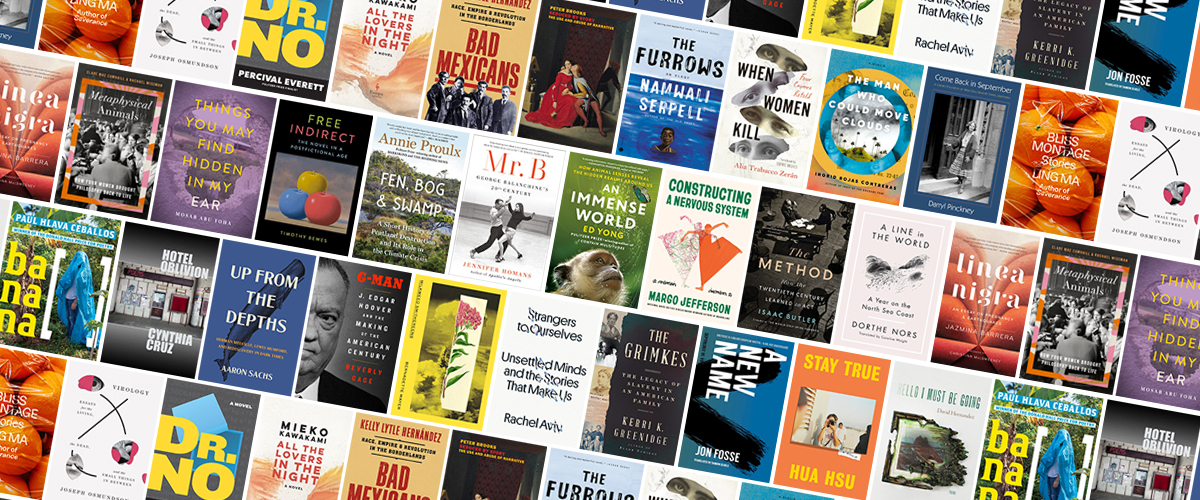Every year, in the weeks leading up to the National Book Critics Circle Awards, the NBCC board members take the time to review and appreciate the thirty finalists, recognized in Autobiography, Biography, Criticism, Fiction, Nonfiction, and Poetry. Needless to say, these thirty books make a pretty good reading list.
This year, the National Book Critics Circle Awards will be held at the New School in New York City on March 23—in person, after three years of digital events. In the meantime, see what the board members have to say about all of the finalists below:
AUTOBIOGRAPHY
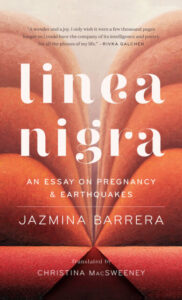
Jazmina Barrera, Linea Nigra: An Essay on Pregnancy and Earthquakes, trans. by Christina MacSweeney
(Two Lines Press)
From May-lee Chai:
Jazmina Barrera’s Linea Nigra (Two Lines Press) is a gorgeous book of insightful, often poetic essays. It’s the autobiography of a woman-identified writer who is deeply examining multiple creative acts from a bodily point of view. Christina MacSweeney’s sparkling translation of Barrera’s lyrical, mosaic-like passages enables the sentences to gleam in English.
The title refers to the Latin term for the black line that forms on a pregnant person’s body, believed to help guide the newborn up the belly toward the breast for feeding. It’s also a metaphor for the creative expression that holds the book together.
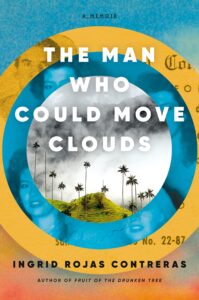
Ingrid Rojas Contreras, The Man Who Could Move Clouds: A Memoir
(Doubleday)
From Mandana Chaffa:
Some families have enough musicians to populate an orchestra, others breed athletes, and some, I suppose, create hordes of CPAs. In Ingrid Rojas Contreras’s family, there are generations of healers, seers, and, in the purest sense of the word, storytellers.
In The Man Who Could Move Clouds (Doubleday), Rojas Contreras expertly layers familial imperatives, Colombian politics, and complex questions about identity, self-determinism, and destiny with writing that is lyrical and lush, depicting a world that may not be entirely visible but is decidedly real.
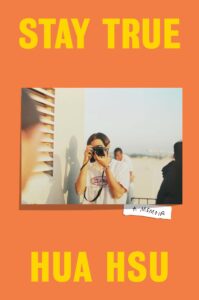
Hua Hsu, Stay True: A Memoir
(Doubleday)
From Keetje Kuipers:
“History is a tale we tell, not a perfect account of reality,” reflects a young Hua Hsu to his friend Ken in Stay True (Doubleday). “You just have to figure out whether you trust the storyteller.” This is certainly the case in Hsu’s own book, where he earns the trust of readers by revealing the unexpectedly tender intimacies of male friendship in a vulnerable coming-of-age memoir that explores grief, movies, music, language, and the complicated catch-all term Asian American.
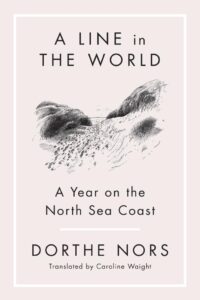
Dorthe Nors, A Line in the World: A Year on the North Sea Coast, trans. by Caroline Waight
(Graywolf)
From Lori Feathers:
In this collection of illuminating essays Danish writer Dorthe Nors explores the untamed, tumultuous North Sea coast of Denmark where she was raised and to which she returns to make her home some forty years later. We accompany Nors through A Line in the World (Graywolf) as she journeys up and down the frigid and rugged coastline, across blustery sand spits, along beaches carved by the roiling sea, and into the fog-hued, thinly populated villages that dot its shores. Nors not only describes this wild place but reads it, animating its essence as if to give the landscape a voice of its own.
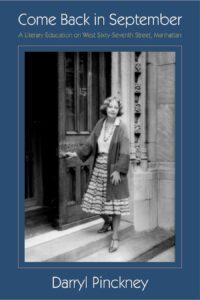
Darryl Pinckney, Come Back in September: A Literary Education on West Sixty-Seventh Street, Manhattan
(Farrar, Straus and Giroux)
From David Varno:
Consummate essayist and novelist Darryl Pinckney’s lively and layered memoir has so much going on—any given page is rich with anecdotes, insights, and searching questions—that it eludes a quick summary.
Where to start? Well, Come Back in September (Farrar, Straus and Giroux) is about Pinckney’s longtime friendship with Elizabeth Hardwick, which began during his student years at Columbia in the early 1970s, when he took a poetry class across the street with her at Barnard. It’s also about Hardwick, her life and work and stewardship of Robert Lowell’s work after his death; and about their milieu of critics, poets, and novelists. Mary McCarthy and Susan Sontag make regular visits at Hardwick’s apartment, where a young Pinckney joins in the conversation. The book also makes room for a story of the New York Review of Books’ founding 10 years earlier, and of Pinckney time there in the mailroom, observing volatile co-founder Robert Silvers (he sees more of Silvers’s fellow editor Barbara Epstein at Hardwick’s place, as they’re neighbors and close friends). Eventually, Pinckney writes for the paper, laboring like Hardwick over a series of drafts. Ultimately, Come Back in September is about a Black gay man finding his place in the literary world while keeping up an active social life around campus and downtown, his young friends including the likes of Lucy Sante and Jim Jarmusch.
BIOGRAPHY
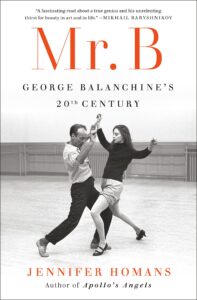
Jennifer Homans, Mr. B: George Balanchine’s 20th Century
(Random House)
From Heather Scott Partington:
“Dancers do not work from texts because there are no texts,” Jennifer Homans writes in her resplendent biography, Mr. B: George Balanchine’s 20th Century (Random House). “Dances are passed… from one dancer’s body to another.” Taking a cue from her subject’s chosen discipline, Homans assembles a text that conveys the influential George Balanchine as a body in time and space. Like his celebrated choreography, Balanchine’s life often ran in syncopation with the rhythm of the 20th century, disrupting dance traditions to create new forms. Homans, a former professional dancer, illuminates her subject like his dancers, “without shadows or dim corners so that every curve, line, bone, ligament of the body [is] X-ray visible… a paradoxical combination of unreal and hyperreal.” Mr. B is a comprehensive, eminently readable history of mortal and metaphysical man.
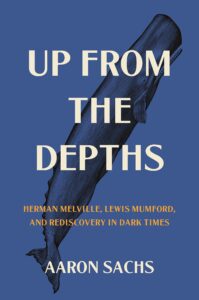
Aaron Sachs, Up from the Depths: Herman Melville, Lewis Mumford, and Rediscovery in Dark Times
(Princeton University Press)
From Jennie Hann:
It’s hard to fathom now, but just over 100 years ago the novelist Herman Melville had sunk into obscurity. Wildly popular at one point in his career, the author nevertheless ended his days engulfed by a torrent of hostile criticism and a maelstrom of personal demons. By the time his centennial arrived in 1919, Melville seemed destined to meet the fate of the doomed whaler whose voyage he had chronicled in Moby-Dick (1851). Instead, he was reincarnated into a literary figure as immortal as Captain Ahab. How did this resurrection happen?
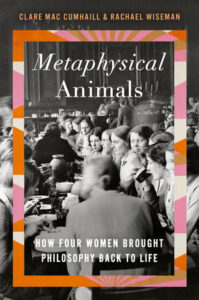
Clare Mac Cumhaill and Rachael Wiseman, Metaphysical Animals: How Four Women Brought Philosophy Back to Life
(Doubleday)
From Rebecca Morgan Frank, Jennie Hann, and Heather Scott Partington:
“We were bored of listening to men talk about books by men about men. And we wanted to philosophize together, as friends. We were looking for a story that could help us . . . do philosophy in a more creative, engaged, and open way.” Thus begins Metaphysical Animals (Doubleday), Clare Mac Cumhaill and Rachael Wiseman’s riveting, co-authored group biography, an account of “the unfolding, interweaving lives of four startlingly brilliant women” whose collective efforts brought “philosophy back to life.”
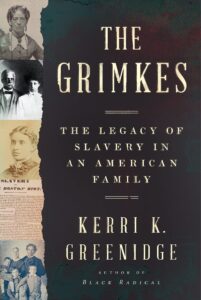
Kerri K. Greenidge, The Grimkes: The Legacy of Slavery in an American Family
(Liveright)
From Elizabeth Taylor:
Sarah and Angelina Grimke have been celebrated as the sisters who came to abhor the slave system upon which their prominent South Carolina slaveholding family’s wealth depended. They defied the family values of Episcopalian piety and antebellum Southern culture, and moved north, to Philadelphia and Boston, and embraced William Lloyd Garrison’s radical call for the abolition of slavery as well as the idea of liberating women.
The Grimke sisters may have been exalted in the public imagination as brave abolitionists and advocates for suffrage, but in her revelatory investigation, Tufts University historian Greenidge challenges these myths. In the story of the two sisters, she uncovers a gnarled family tree, rooted in moral contradiction and generations of trauma.
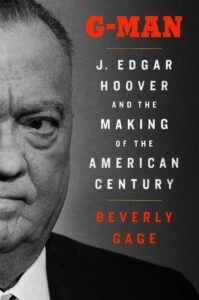
Beverly Gage, G-Man: J. Edgar Hoover and the Making of the American Century
(Viking)
From Elizabeth Taylor:
In her towering biography of one of the most powerful unelected officials in American history, Beverly Gage tells the story of the quintessential Government Man, John Edgar Hoover. He reigned over the F.B.I. from 1924-1972, fashioning it in his image. While his name may conjure associations of malfeasance and destruction, Yale historian Gage shows that Hoover’s life and work very much reflected the arc of public opinion in the 20th century.
“We cannot know our own story without understanding his, in all its high aspirations and terrible cruelty, and in its many human contradictions,” writes Gage. She has miraculously untangled those contradictions and our own paradoxical national story involving American anxieties over security, masculinity, and race in her astounding biography.
CRITICISM
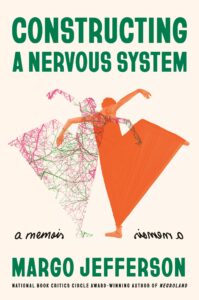
Margo Jefferson, Constructing a Nervous System: A Memoir
(Pantheon)
From J. Howard Rosier:
“You haven’t earned your right to be tired yet, have you, Donkey?” This line, the conclusion to Margo Jefferson’s landmark Constructing a Nervous System (Pantheon), serves as a flash point for both the author and her book’s uniqueness. An imagining of what Jefferson’s late grandmother would’ve said to her had she been alive to witness this display—and there’s no way else to describe it: its intricate structure shimmers between its covers like an heirloom behind glass—serves as both an apology and a defense.
The former acknowledges the weight placed on Black women, specifically Black grandmothers, to absorb relentless day-to-day drudgery so that their progeny can move high and their progeny can move even higher beyond what their forebears imagined. The latter shields this ideal from the feminist critique, which Jefferson heard at meetings she attended in the 1970s, that this labor was exploitative; for naught. To a Black person, the work of one’s elders cannot be dismissed as a cog in the machine. The pathos arises from Jefferson’s knowledge that to be wary of this arrangement isn’t wrong, but that, paradoxically, it is wasteful to jettison that effort in the name of purity. The bulk of Nervous System’s narrative tension arises from this negotiation between social critique and the protection of legacy.
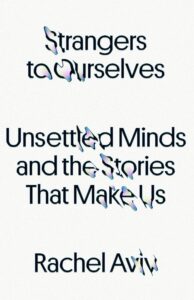
Rachel Aviv, Strangers to Ourselves: Unsettled Minds and the Stories That Make Us
(Farrar, Straus and Giroux)
From Jo Livingstone:
The fact that language mediates reality is one of those human conditions which can feel banal to remark upon. Rachel Aviv argues for its peculiarity and interest in her sparkling debut, Strangers to Ourselves: Unsettled Minds and the Stories That Make Us (Farrar, Straus and Giroux), through stories about the language and literature of mental illness.
Ethical conundrums, especially those that appear in medical contexts, are the classic Aviv subject. They will be familiar to her readers in the New Yorker, where she has been a staff writer for a decade. In 2011, she wrote in the magazine about patients who reject their diagnoses, taking seriously the “catch-22” punchline of Joseph Heller’s novel—that is, an insane person whose insanity is proven by his belief in his own sanity. This basic principle, that mental illness is culture-bound in its pathology and its treatment, is extended here to frightening and very well-documented dimensions.
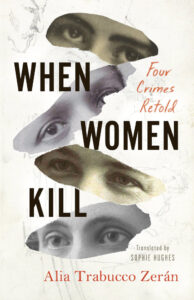
Alia Trabucco Zerán, When Women Kill: Four Crimes Retold, trans. by Sophie Hughes
(Coffee House Press)
From Jo Livingstone:
In the excellent English translation by Sophie Hughes, Alia Trabucco Zerán recounts talking about her book, originally published as Las homicidas. “‘Women who kill,’ I reply, time and again, when people ask me what my book is about.” But then her interlocutors, she explains, “furrow their brows, wince, and then nod their heads in approval of my decision to tackle such a pressing, awful, and all-too-common problem in Latin America.” As her women murderer subjects repeatedly transformed into murdered women in other people’s imaginations, Trabucco Zerán’s surprise yielded to a realization: that “it’s easier for people to imagine a dead woman than a woman prepared to kill.”
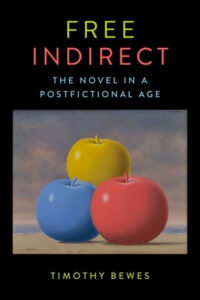
Timothy Bewes, Free Indirect: The Novel in a Postfictional Age
(Columbia)
From Jennie Hann:
How does the novel think? How does it register thought? And how do we as readers distinguish between what the characters in the book think and what the writer behind it thinks—or, at least, what we think the writer might be thinking? Moreover, what does it mean to attribute a process of thought to the novel itself, as distinct from its narrator, characters, author, or readers? What is the value in doing so?
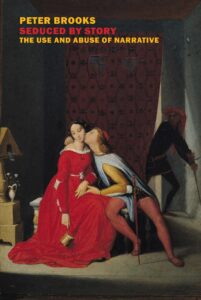
Peter Brooks, Seduced by Story: The Use and Abuse of Narrative
(NYRB)
From J. Howard Rosier:
Though aimed at the literary humanities—the loose cluster of English, philosophy, history, and theological studies that, if current debates are any indication, have fallen on hard times—Peter Brooks’s Seduced by Story (New York Review Books) points to the real-world implications of narratives beyond the academy. “[A]ttention to the ways that narrative works as system and as rhetoric…should prove useful in promoting clarity of thought about our desire and our need for narrative,” Brooks asserts. Paradoxically, the bulk of his corroborations arrive from canonical writers. Faulkner, Conrad, Dumas, Henry James: there’s a baked-in difficulty to decrying the proliferation of cliched stories while presenting works that, in their difficulty levels, are ignored by average readers. But therein lies his point, and its beauty. By focusing on the uniqueness of certain narrative functions and encouraging their place, by way of academic instruction, in informing public life, Brooks achieves a rare feat in our diametric era of elites and populists. He is aiming high while reaching back and pulling up the rest of us with him.
FICTION
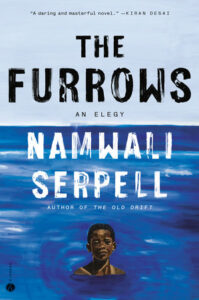
Namwali Serpell, The Furrows
(Hogarth)
From Jane Ciabattari:
Namwali Serpell is an evocative, erudite, and original writer. She mixes Gothic and Afrofuturist styles in The Old Drift, her first novel, a three-family saga that spans nearly two centuries of Zambian history (my favorite part is the recurring chorus of mosquitos). Her collection of speculative essays, Stranger Faces, a 2020 NBCC criticism finalist, showcases her wry wit and wide range of cultural interests, from Derrida to Keanu Reeves.
Her dazzling, inventive second novel, The Furrows: An Elegy (Hogarth), shifts from realistic to surreal to noir to horror, with nods to William Empsom, W.E.B. Du Bois, Toni Morrison, Virginia Woolf, Zora Neale Hurston, Alfred Hitchcock, and Toni Morrison (the title echoes a line from Morrison’s Paradise: “Beware the furrow of his brow”).
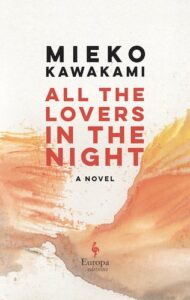
Mieko Kawakami, All the Lovers in the Night, trans. by Sam Bett and David Boyd
(Europa Editions)
From David Varno:
From the first page of Japanese writer Kawakami’s third novel published in translation from Bett and Boyd (after Breasts and Eggs and Heaven), the reader is swept under by a powerful wave. It’s her narrator’s consciousness, containing an unforgettable interiority marked by singular perceptions.
Fuyuko Irie, 34, works as a proofreader for a Tokyo publisher. She began the job shortly after college, when she trained herself not to get absorbed by her assignments (“the goal is to read as little as possible,” she explains). The job is well-suited to people who don’t mind being alone, a state she’s come to accept, though an abject sadness occasionally swells to the surface. After years of conditioning herself into a blank slate, though, it’s hard for her to turn back. A lonely routine fills the space between work hours. After a simple spaghetti dinner at home, she has nothing else to do: no friends, no interest in music or reading, and no ability to watch TV without looking for errors in the subtitles.
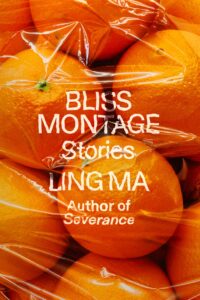
Ling Ma, Bliss Montage: Stories
(Farrar, Straus and Giroux)
From J. Howard Rosier:
Bliss Montage (Farrar, Straus and Giroux), Ling Ma’s second book and first collection of stories, is ostentatious in neither syntax nor storytelling. Nevertheless, the collection guts and renovates the genre by refusing to draw a distinction between realism and fable. Call it speculative fiction if you want, but the ground situation that informs “Los Angeles”—the wife of a wealthy investor shares their domestic compound with all 100 of her ex-boyfriends—is about as reasonable as homeless University of California students being “allowed” to sleep in their cars on campus. This initial story sets the tone for Bliss Montage’s woozy relationship with plausibility. Freed from the constraints of allegory or standard-issue plot mechanics, readers are instead left to reflect on more essential things, most prominently, humanity’s ability to absorb and inflict harm.
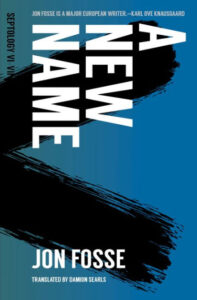
Jon Fosse, A New Name, trans. by Damion Searls
(Transit Books)
From Adam Dalva:
and I see that I am writing the NBCC citation for A New Name: Septology VI-VII (Transit Books), yes, and I find after I go back and read Septology I-V that though I was first drawn toward the novel’s form, especially the long sentence that runs through it, stuttering here and there with dialogue and conjunction and affirmation and conjecture, I now think that the narrative line runs even more extraordinarily, yes, because I think that Fosse and his translator Damion Searls have created something unprecedented, and I think that the boldness of their work can be shown just by listing out the cast, yes, the protagonist Asle and his late wife Ales and his brother Åsleik and his doppelganger Asle, and they have doubled the lead just as the protagonist Asle has doubled lines in the iconic painting he is working on…
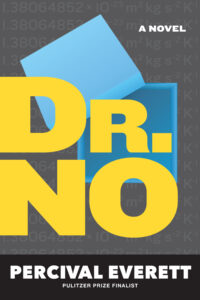
Percival Everett, Dr. No
(Graywolf)
From Colette Bancroft:
If Groucho Marx and Richard Pryor became mathematics professors and decided to collaborate on a spoof of Ian Fleming’s James Bond novels, they might come up with something like Percival Everett’s Dr. No (Graywolf).
Everett borrows his title from Fleming and the movie, as well as the basics of the spy thriller, but the rest is the fruit of his astonishing imagination. His earnest narrator is a Black man named Wala Kitu, a distinguished professor of mathematics at Brown University who specializes in the study of nothing. Even his name means “nothing”—Wala in Tagalog, Kitu in Swahili. (He chose the name himself—originally, he was Ralph Townsend, the infant prodigy who narrated Everett’s earlier novel Glyph.)
NONFICTION
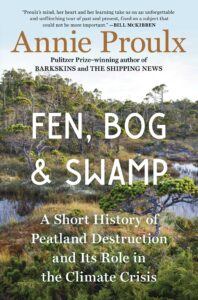
Annie Proulx, Fen, Bog, & Swamp: A Short History of Peatland Destruction and Its Role in the Climate Crisis
(Scribner)
From Colette Bancroft:
Annie Proulx’s towering gifts for narrative and description have been pillars of her award-winning fiction, and she brings those gifts to her slim, powerful nonfiction book Fen, Bog & Swamp (Scribner).
Climate change is such an enormous subject that it can be difficult to comprehend; Proulx’s strategy for helping us to grasp its urgency is to focus on the specific environments of the title. She also draws us in by writing about her personal passion for the natural world—the book begins with her vivid childhood memory of a visit to a swamp in a Connecticut state park.
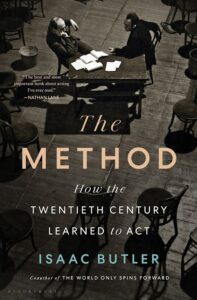
Isaac Butler, The Method: How the Twentieth Century Learned to Act
(Bloomsbury)
From Anita Felicelli:
Isaac Butler’s The Method: How the Twentieth Century Learned to Act (Bloomsbury) is an astounding intellectual and social history that unfolds in three acts. It begins with the Russian seeds of a movement that radically broke with past stylistic dramatic conventions that favored conventional presentations of emotion, and instead gave primacy to perezhivanie in acting. Perezhivanie, translated as “experiencing,” happens when an actor steps so completely into a character’s imaginary reality that they can feel what the character feels and live the part.
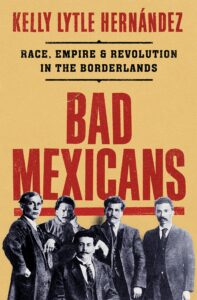
Kelly Lytle Hernández, Bad Mexicans: Race, Empire, and Revolution in the Borderlands
(Norton)
From Ruben Quesada:
In her extraordinary work, Bad Mexicans: Race, Empire, and Revolution in the Borderlands (Norton), Kelly Lytle Hernández offers a reexamination of the Mexican Revolution by studying the enmeshed history of American imperialism and the rise of Mexico’s dictator Porfirio Díaz. With nuance, she elucidates the complex interplay underpinning the U.S.-Mexican relationship, most notably the story of the magonistas, an anarchist group of rebels formed in 1905 by brothers Jesús and Ricardo Flores Magón as a political party to challenge Díaz’s dictatorship. The magonistas were a threat to U.S. capitalists. Without Díaz, investors like the Rockefellers, William Randolph Hearst, the Guggenheims, and others would no longer prosper in Mexico and from Mexican laborers.

Joseph Osmundson, Virology: Essays for the Living, the Dead, and the Small Things in Between
(Norton)
From Maris Kreizman:
Plenty of scientists have written books, but it’s rare to come across a truly compelling writer who also happens to be a scientist. We are so lucky that microbiologist Joseph Osmundson is both. In his essay collection Virology (Norton), Osmundson’s dexterity with prose renders even the most difficult-to-comprehend phenomena (for this layperson, anyway!), not just accessible but beautiful.
It’s the perfect book for readers who don’t want to choose between learning something and getting caught up in words. A blend of incisive personal writing along with technical science writing, with forays into public health policy as well as literary theory, Virology considers a kaleidoscope of aspects about how we live with viruses, how they work, and how we talk about them. In writing about HIV and Covid-19, Osmundson enjoins us to resist metaphors that seek to make sense of viruses through a lens that’s violent (Patrick Nathan joins Osmundson to write a searing essay about the dangers of the so-called “‘war’ against Covid-19”) or victim-blaming. Rather, in a gorgeous essay about the fundamental queerness of viruses and how they replicate (“Queerness includes anything that resists simple—nuclear—explanations of family and reproduction”) and a meditation on the evolution of viruses to the tune of an LCD Soundsystem song (“I can change, I can change, I can change”), Osmundson offers less explored ways to view the way we share the world with viruses.
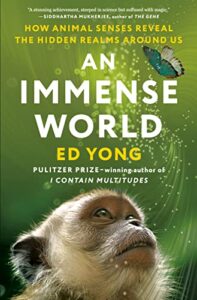
Ed Yong, An Immense World: How Animal Senses Reveal the Hidden Realms Around Us
(Random House)
From Jo Livingstone:
Of all the books published in 2022, I gave only one to my optometrist. Dr. Cheng shares his storefront reception area with a sweet little dog, and I’ve often wondered what the animal sees when it looks at me.
I thought of them both when I learned the truth, which you will have to look up for yourself in Ed Yong’s An Immense World: How Animal Senses Reveal the Hidden Realms Around Us (Random House). It’s a compendium of stories from the history of research into the senses of animals, in that he takes us in each section to the time and place that somebody discovered something new and thrilling about the way that insects rumble, or fish’s eyes disappear. It’s an interesting way to structure such a big slab of a book, making for the kind of thing you can dip in and out of or mainline on the weekend.
POETRY
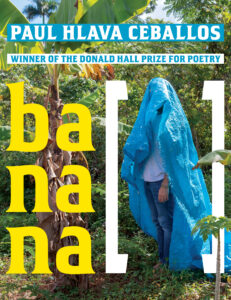
Paul Hlava Ceballos, banana [ ]
(Pitt)
From Diego Báez:
Paul Hlava Ceballos’s banana [ ] (University of Pittsburgh Press), born of Banana [ ______ ] / we pilot the blood, his collaboration with poet Quenton Baker and creative scholar Christina Sharpe, emerges from its tête-bêche origin to untangle questions of exploitation, multinational capital, and commodity fetishism. The formal heart of Ceballos’s book, a sequence titled “Banana [ ]: A History of the Americas,” is an exquisite feat of documentary poetics. Comprising hundreds of quotes pulled from government paperwork, newspaper articles, corporate statements, and other sources, the quoted material repeats the word “banana” until it transforms the thing itself into a symbol for the brutal injustice and colonial violence suffered by laborers on banana farms, everyday people affected by the fickle machinations of fruit export economies or, indeed, entire nation states in Latin America.
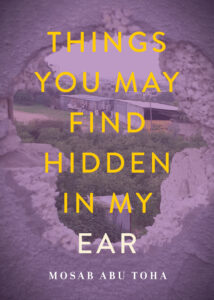
Mosab Abu Toha, Things You May Find Hidden in My Ear
(City Lights)
From Jacob Appel:
The Gaza of Mosab Abu Toha’s childhood is a land of tortured ambiguities, a precarious, uncertain place where “you don’t know what you’re guilty of,” where “breathing is a task” and “smiling is performing / plastic surgery,” as he writes in two poems from Things You May Find Hidden in My Ear (City Lights). Yet Palestine is also a land of poetry, of Mahmoud Darwish and Tawfiq Ziad. Abu Toha has now slipped seamlessly into that mantle, and this first collection announces his arrival at the helm of a new generation of Palestinian poets.
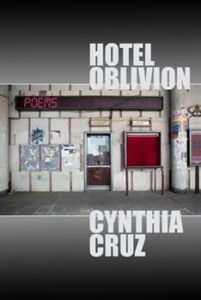
Cynthia Cruz, Hotel Oblivion
(Four Way)
From Rebecca Morgan Frank:
The speaker of Cynthia Cruz’s Hotel Oblivion (Four Way Books) inhabits hotel rooms in Warsaw, Berlin, and Belgrade, anonymous rooms simultaneously serving as archives of memory and as blank interiors packed with ephemera: “white stockings in dot- / like patterns,” magazines, postcards, “academic texts on fragments, and a ticket / roundtrip, to Warsaw or Kiev.” Polaroids paper the walls. The speaker enters collected images and films, transforming and disguising herself, including as the star of an “Estonian underground / experimental film,” as a young Jean Genet as seen in a photograph, and as other versions of herself. She is a shapeshifter finding freedom from the body, merging self-examination with examinations of the idea of the self.
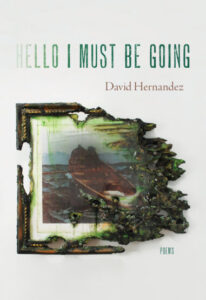
David Hernandez, Hello I Must be Going
(Pitt)
From Ruben Quesada:
David Hernandez’s fifth poetry collection Hello I Must Be Going (Univ. of Pittsburgh), guides us through lucid and surreal observations. His writing trajectory over the years is impressive. In addition to the previous four collections, he published two YA novels with HarperTeen. His honors include the Kathryn A. Morton Prize in Poetry, the Crab Orchard Series poetry prize, and a National Endowment for the Arts Fellowship. Hernandez does not disappoint with this new triptych collection.
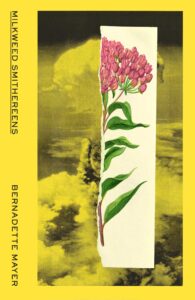
Bernadette Mayer, Milkweed Smithereens
(New Directions)
From Mandana Chaffa:
Bernadette Mayer’s Milkweed Smithereens (New Directions), a collection of older and newer poems, offers further proof of her importance in the contemporary American poetry landscape. Mayer’s poetry has always been an exuberant embrace of quotidian life—from the justly celebrated Midwinter Day to decidedly unstuffy sonnets, trenchant commentaries on politics, and gorgeous chronicles of nature—in ways lyric, funny, arch, multitudinous, and always true. There’s no loftiness in Mayer’s work and world, notable in this ars poetica excerpt from “I IMAGINE A POEM by bernadette mayer (based on a poem by ALAN CASLINE)…

